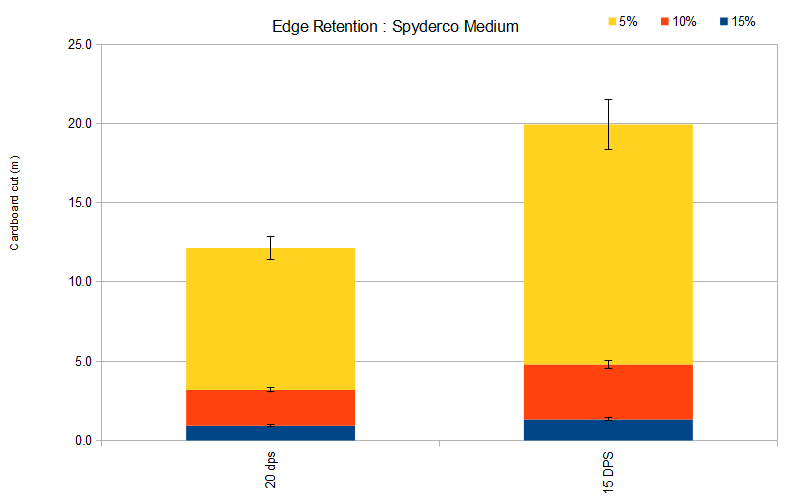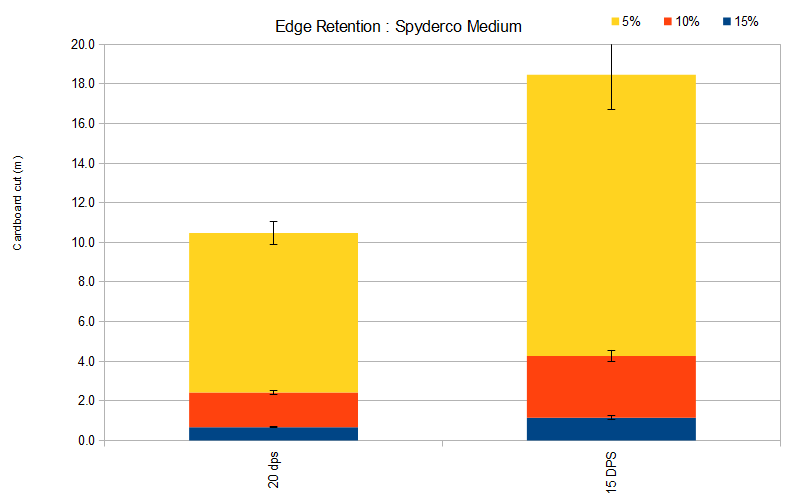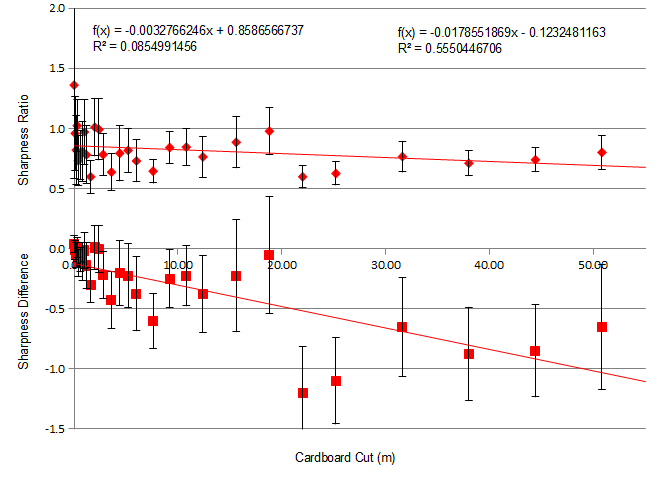
Basic Procedure
In addition :
Cardboard details :
In regards to the values :
means :
As a rough check, as long as the runs are changing the median by more than the standard deviations it is unlikely the result is stable (i.e. the true value).
| Knife | Angle | Initial Sharpness | 15% | 10% | 5% |
|---|---|---|---|---|---|
| cardboard cut (m) | |||||
| Ai-De | 15 | 50-25(18) | 1.1+0.0(0.1) | 3.1-0.2(0.3) | 14- 3( 2) |
| 20 | 68- 8(30) | 0.7-0.1(0.1) | 1.8-0.4(0.1) | 8- 3( 1) | |
| Galaxy Cleaver | 15 | 56+ 2(13) | 1.3-0.1(0.1) | 3.5-0.3(0.3) | 15- 2( 2) |
| 20 | 63- 8(30) | 0.9-0.2(0.1) | 2.3-0.4(0.1) | 9- 2( 1) | |
In short, the Ai-De Chef knife shows a 77 (25)% increase in edge retention from the 20 to the 15 dps micro-bevel. A direct comparison :

and a point by point ratio comparison showing the consistent increase in performance by the 15 dps bevel :

The Galaxy showed a 69 (22) % increase :

and also showed the same consistent behavior :

As these knives are made from similar steels and the results are consistent they can be combined. With the data is pooled it shows an edge retention advantage of 66 (17) % increase when the angle is changed from 20 to 15 dps.
In regards to the lower angle having increased edge retention the reasons are :
Thus increasing the edge angle does not offer a practical increase in strength and durability as it already is strong and durable enough to resist damage at 15 dps. The increased edge angle just makes the edge into a heavier wedge which actually thickens faster under a given amount of wear and the wear will be accelerated due to concentration of forces around the edge due to the higher angle.
Most of the pictures in the above are in the edge
retention album at PhotoBucket.
| Last updated : | 16/09/2013 |
| Originally written: | 26/11/2013 |